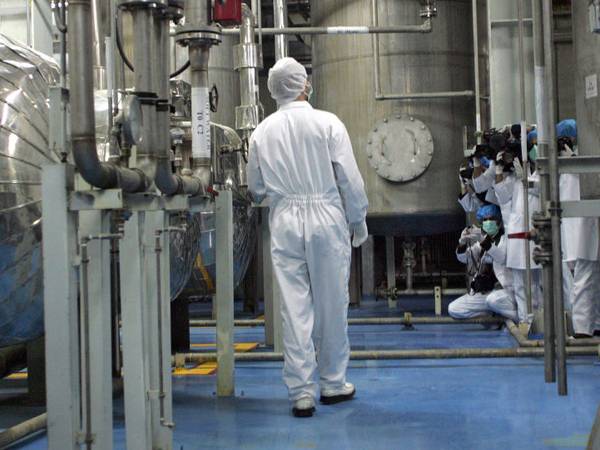Pressure is growing on Iran ahead of the United Nations nuclear watchdog’s 35-nation board meeting next week with the agency dissatisfied at Tehran’s cooperation.
France's foreign ministry on Tuesday urged Iran to assuage concerns reiterated Monday over Iran’s pre-2003 nuclear work in a report by the UN’s International Atomic Energy Agency director-general Rafael Mariano Grossi.
Israeli Prime Minister Naftali Bennett Tuesday tweeted several Iranian documents from 2004 and 2005, which he said Israel had acquired, that showed Iran had stolen IAEA classified documents and used the information to “systematically evade nuclear probes.” Bennett also tweeted an animation with green-uniformed, bearded Iranians hiding nuclear bombs from a blond-haired nuclear inspector.
One of the documents released by Bennett is a series of Iranian comments on a September 2005 report by then IAEA director-general Mohamed ElBaradei, which included his analysis of Iran’s -pre-2003 nuclear research. ElBaradei noted that while “good progress” had been “made in Iran’s correction of the breaches” in adherence to the Nuclear Non-Proliferation treaty (NPT), the agency would continue to press Iran for further explanations given its “experiments to acquire the know-how for almost every aspect of the fuel cycle” and “policy of concealment…until October 2003.”
The Iranian comments released by Bennett, in Persian and English translation, expresses Iran’s view that Tehran was under no legal obligation to answer queries it said were unrelated to the nuclear program therefore its commitments under the NPT.
Current IAEA director-general Grossi said in a report this week that Iran had so far failed to meet an agreement, made this March, to satisfy the agency over outstanding issues on this pre-2003 work with written replies by late March and answers to subsequent queries by June 21.
‘Obtained by intelligence measures’
Other documents, dated 2004, attached to Bennett’s tweet refer to ‘confidential’ IAEA material “obtained by intelligence measures,” suggesting that Iran had some prior knowledge of what agency inspectors might investigate.
These include notes on the need to change dates concerning the liquidation of Kimiya Maadan, a company managing a uranium mine, although quite how this affected the agency’s work remains unclear. The Wall Street Journal, which had earlier access to the documents tweeted by Bennett, cited “Middle Eastern intelligence officials” claiming that altering the date “allowed Iran to tell the IAEA that the work on the uranium mine, before May 2003, was done by Kimiya Maadan for the Atomic Energy Organization of Iran, supporting Iran’s assertion that the mine was civilian and separate from any military nuclear work.”
The Journal cited “Middle Eastern intelligence officials and former IAEA officials” that “Iran’s Ministry of Defense built the uranium mine, called Gachin, to be able to produce material for a potential nuclear-weapons program…”
‘Digging up old cases’
The 2005 ElBaradei report, while noting there were “no indications of undeclared mining or milling activities at Gahine [sic],” said the IAEA was “trying to achieve a better understanding of the complex arrangements governing the past and current administration of the Gchine mine and mill…[including] …how a turn-key project for a uranium ore processing plant could have been implemented by a newly founded company…in such a relatively short period of time.”
The purported Iranian comments on the ElBaradei report released by Bennett suggested the agency was “digging up old cases” and noted its interest in Tehran’s alleged “ties with a smuggling network.” Some analysts have long suggested that Iran before 2003 acquired equipment, including centrifuge parts, from the Pakistani nuclear scientist AQ Khan.
